The aim of the Sustainable Buildings Research Centre is to research, collaborate, and link with industry to meet the challenge of improving the performance of our new and existing building stock focused on making buildings more liveable, more sustainable, more cost-effective and kinder to our environment.
Research themes
- Energy: Sustainable and Efficient Utilisation, Generation and Storage
- Sustainable and Resilient Buildings: Construction, Performance, Retrofit, Precincts and Supply Chain
- Human Factors: Comfort, Health and Wellbeing
- Automation, Sensing and Control
- Modelling and Decision Support Systems
- Micro-grid (building scale or precinct scale)
- Ground source and air source heat pumps
- Phase Change Material (PCM) applications
- Photovoltaic-Thermal (PVT) systems
- Demand-side management and Distributed generation
- Energy informatics/intelligent built environment
- Net Zero Energy Buildings (NZEB)
- Prefabricated sustainable buildings
- Bushfire resilient buildings
- Housing for disaster recovery
- Retrofit for energy efficiency and thermal comfort
- Community response to natural disasters and heatwaves
- Urban heat island
- Green and cool roofs and walls
- Aged care accommodation
- Dementia friendly architecture
- Energy efficiency for low income households
- Indoor Environment Quality (IEQ)
- Thermal Comfort
- Heat and moisture transfer in buildings
- Building Management Systems (BMS)
- Predictive control
- Smart home systems
- Building information modelling
- Building energy modelling
- Cost benefit analysis
- Decision support systems
- Life cycle analysis
- Circular economy
Leading sustainable innovations
A world leader in energy-efficient building design, the Sustainable Buildings Research Centre (SBRC) is a living laboratory where researchers test and develop their own sustainability projects.
Find an expert Contact us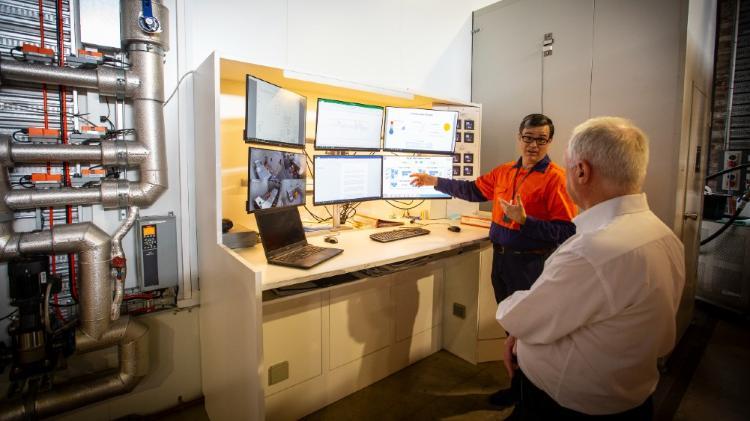
Research projects
Overview
The Innovation Hub for Affordable Heating and Cooling (i-Hub) is an initiative led by the Australian Institute of Refrigeration, Air Conditioning and Heating (AIRAH) in conjunction with CSIRO, Queensland University of Technology (QUT), the University of Melbourne and the University of Wollongong and supported by Australian Renewable Energy Agency (ARENA) to facilitate the heating, ventilation, air conditioning and refrigeration (HVAC&R) industry’s transition to a low emissions future, stimulate jobs growth, and showcase HVAC&R innovation in buildings. The objective of i-Hub is to support the broader HVAC&R industry with knowledge dissemination, skills-development and capacity building. By facilitating a collaborative approach to innovation, i-Hub brings together leading universities, researchers, consultants, building owners and equipment manufacturers to create a connected research and development community in Australia.
Warrigal Shell Cove i-Hub Living Laboratory
A ‘Living laboratory’ is a user-centred open-innovation, ecosystem within collaborative partnerships. The Warrigal Shell Cove i-Hub Living Laboratory establishes research-quality measurement and verification systems within an existing aged care facility, HVAC services and occupants in order to observe and evaluate technology upgrades within the context of the daily life of the aged care ecosystem. The technology upgrades trialled in this living laboratory will be selected from promising electric heating and cooling strategies that increase the energy flexibility of aged care facilities and deliver increased value for renewable energy, at the site and grid level.
Resources
Warrigal Shell Cove i-Hub Living Laboratory brochure (PDF: 1,976 KB)
i-Hub ACT Schools Living Laboratory
A ‘Living laboratory’ is a user-centred open-innovation, ecosystem within collaborative partnerships. The i-Hub ACT Schools living laboratory establishes research-quality measurement and verification systems within existing school buildings, HVAC services and occupants in order to observe and evaluate technology upgrades within the context of the daily life of these school ecosystems. The technology upgrades trialled in this living laboratory will be selected from promising electric heating and cooling strategies that increase the energy flexibility of ACT schools facilities, and deliver increased value for renewable energy, at the site and grid level.
Resources
Overview
At the University of Wollongong, a team of experts are participating in a unique project with the aim of targeting the gaps in the scientific understanding of bushfires.
Under the Global Challenges project, a multi-disciplinary team is bringing together specialists from social science, engineering and business to capture the complexity of bushfire events and how communities prepare for, respond to and recover from these destructive events.
In areas ranging from the physical interaction between fires and buildings, through to the social and societal factors that can help us build more bushfire-resilient communities, this project, along with other bushfire related work at UOW, will address the substantial hazard faced in Australia from these seasonal events.
Under the microscope
Two of our projects are examining some of the preventative measures people can take to mitigate the damage to property. In the shadow of the recent bushfire season, a project in the Kangaroo Valley is examining the potential retrofitting of houses, while research around the efficacy of sprinkler systems has been ongoing for several years.
Research case studies
- Waste heat recovery and energy sharing towards a circular economy in the dairy industry
- Demand Flexibility in Buildings
- Heatwave Resilience Star Rating Model Development
- Roof Ventilation Model Development and Validation
- Evaluation of Cost-Effective Hospital Ventilation Retrofits as a Response to the COVID-19 Pandemic
- The impact of Indoor Air Quality on the transmission of airborne viral diseases in public buildings: a systematic review of evidence
- Net Zero Energy Low Rise Unit Buildings
UOW Researchers
- Professor Zhenjun Ma
- Dr Emily Yap
Research Partners
- Bega Cheese Ltd
- GeoExchange Australia
Overview
The dairy industry is Australia’s third-largest rural sector, playing a vital role in the nation’s agricultural economy. It is also an energy-intensive sector, with farming and processing operations requiring substantial cooling and heating, often resulting in a significant amount of waste heat. The increasing consumer demand for dairy products nationally and globally, coupled with the challenges posed by climate change, such as droughts and floods, necessitates energy efficiency measures in dairy farming and production.
The project is a collaborative effort, led by Professor Zhenjun Ma and Dr Emily Yap and in partnership with Bega Cheese Ltd and GeoExchange Australia. The circular economy is a promising direction offering the potential to reduce greenhouse gas emissions and enhance sustainability and resilience, while accelerating economic growth and increasing energy productivity. The project applies circular economic approaches to identify waste heat recovery and thermal energy sharing opportunities on farms and in processing factories for energy efficiency.
Energy monitoring is being conducted on two dairy farms and a processing factory in the Bega Valley Shire as a representative place-based study. The project is part of initiatives led by the Regional Circularity Co-operative to transform the Bega Valley into a living regional exemplar of circularity by 2030.
Theme
- Community engagement and partnerships
Relevant SDGs
- SDG 7: Affordable and clean energy
- SDG 9: Industry, innovation and infrastructure
- SDG 12: Responsible consumption and production
- SDG 13: Climate action
Find out more
- Waste heat recovery and thermal energy sharing towards a circular economy - NSW Decarbonisation Innovation Hub
- Waste heat recovery and thermal energy sharing towards a circular economy - Bega Circular Valley
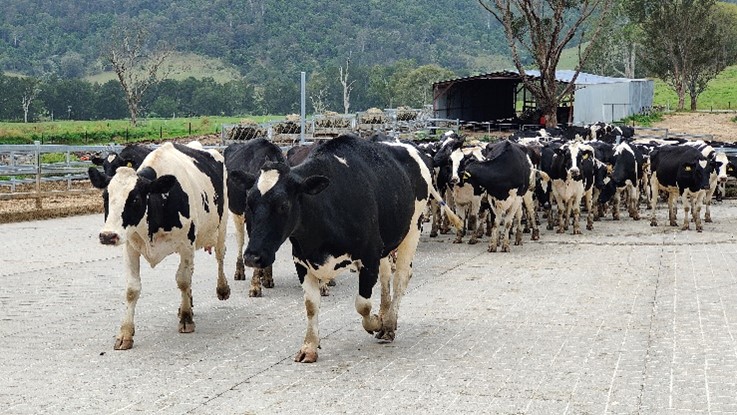
UOW Researchers
- SBRC
Research Partners
- CSIRO
- NSW Government - NSW Digital Infrastructure for Energy Flexibility (DIEF) project
Overview
Actions to progress towards achieving net-zero emissions in Australia and globally have seen the onset of renewable energy technologies in residential, commercial and industrial buildings. However, the intermittent nature of renewable energy generated can cause grid instability. Demand flexibility is being introduced as a strategy to accommodate for more renewable energy technologies such as solar and wind farms. Buildings, in particular, can become active participants by reducing or shifting its power consumption in response to the needs of the electrical grid.
At the team at the Sustainable Buildings Research Centre (SBRC) are working alongside CSIRO and more than 50 researchers from international institutions to develop, characterise and turn demand flexibility into reality. Through the deployment of a digital-grid infrastructure, five megawatts of flexible energy will be unlocked across 200 non-residential buildings. This would allow buildings to better match their energy use to times of the day when renewable energy is abundant, helping reduce costs, lower emissions and improve energy reliability.
To explore how this works, the team is using buildings on the Wollongong and Innovation Campus, as Living Laboratories to run tests. With sensors and control systems in place, a series of experiments are run to see how heating and cooling systems in buildings could respond to energy demands in smarter ways. The rich data collected from these tests offers deep insights into how building systems behave, revealing the underlying mechanisms that make demand flexibility work.
In parallel, the team has developed virtual models of buildings, where they could simulate different scenarios and test strategies without disrupting day-to-day operations.
Together, the experimental and digital work form a powerful toolkit for identifying practical, scalable flexibility solutions.
Themes
- Environment and climate action
- Industry and energy transformation
Relevant SDGs
- SDG 7: Affordable and clean energy
- SDG 11: Sustainable cities and communities
- SDG 13: Climate action
- SDG 14: Partnerships for the goals
Find out more
- NSW DIEF – Data Clearing House
- UOW Demand Flexibility Case Study – Data Clearing House
- International Clean Innovation Researcher Networks – Data Clearing House
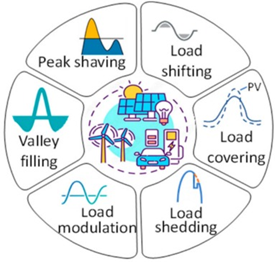
UOW Researches
- SBRC
Research Partners
- Resilient Building Council
Overview
In partnership with the Resilient Building Council, the UOW Sustainable Buildings Research Centre developed a home assessment model that:
- Identifies characteristics of an assessed house that are important to its performance during extreme heatwaves;
- Calculates a Resilience Star Rating for the house in its current state;
- Generates a prioritised list of home retrofits that would provide the greatest improvements in heatwave resilience.
This model will accompany resilience ratings models for bushfire, flood and storm/cyclone in a Multi-Hazard Resilience Rating Tool, which is currently being piloted by the Resilient Building Council.
Resilience ratings will enable faster and more effective climate adaptation across Australia. They provide:
- Homeowners with evidence-based, tailored guidance on how to retrofit their house;
- Government with a standardised quantitative measure of resilience, to inform policy and funding initiatives; and
- Insurers and banks with a framework to incentivise and support adaptation.
The UOW Sustainable Buildings Research Centre continues to support the development and roll-out of the Multi-Hazard Resilience Rating Tool.
Themes
- Environment and climate action
- Health and wellbeing
- Industry and energy transformation
Relevant SDGs
- SDG 3: Good health and well-being
- SDG 11: Sustainable cities and communities
- SDG 13: Climate action
Find out more
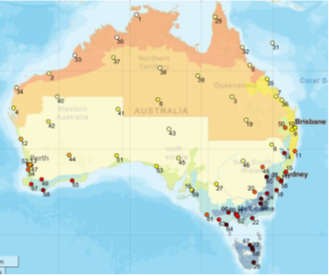
UOW Researches
- SBRC
- ARC Research Hub for Australian Steel Innovation
Research Partners
- BlueScope
Overview
The UOW Sustainable Buildings Research Centre developed and experimentally validated a roof ventilation model in partnership with the BlueScope, and with support from the ARC Research Hub for Australian Steel Innovation. The study involved four stages:
- Detailed measurement of air flows, temperatures and humidity levels within a test roof, and correlation with local weather conditions.
- Development of a mathematical model of transient heat, air and moisture transport through roof structures, tailored to typical Australian construction practices.
- Validation of the model against the experimental result.
- Application of the model to study roof thermal performance and risk of condensation across various Australian climates.
This research is providing a rigorous evidence base for design guidance and for improvements to building codes and standards. Such evidence is critically needed as Australian building practices change in response to tightening energy efficiency standards, increasing expectations for healthy and comfortable indoor environments, and the changing climate.
Themes
- Environment and climate action
- Health and wellbeing
- Industry and energy transformation
Relevant SDGs
- SDG 3: Good health and well-being
- SDG 11: Sustainable cities and communities
- SDG 13: Climate action
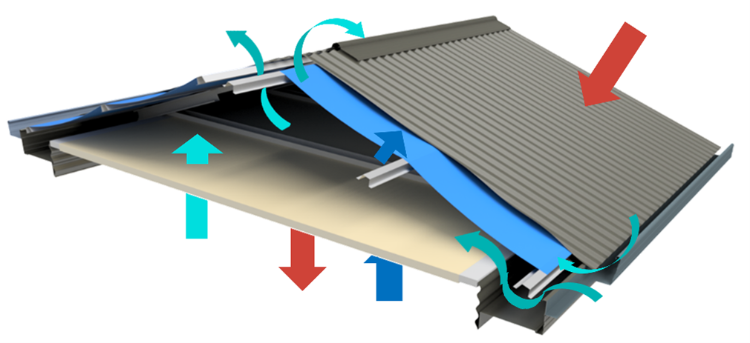
UOW Researchers
- SBRC
Overview
Over the course of the COVID-19 pandemic it became apparent that the ventilation and HVAC systems of existing Australian hospitals and other healthcare buildings needed to be improved so as to reduce the risk of airborne transmission of infection. However, to quickly bring all wards and rooms containing potentially infectious patients up to the highest standards of airborne infection control would be an extremely expensive and lengthy proposition. Nevertheless, many hospitals and other high-risk buildings have been retrofitted in an effort to reduce the risk of COVID-19 and other airborne disease quickly spreading through a given facility.
The Sustainable Buildings Research Centre undertakes an ongoing study of a number relatively simple and cost-effective ventilation retrofits that have been installed across a range of hospitals in a particular Local Health District in New South Wales during the peak of COVID-19 pandemic.
These retrofits included: a) installation of additional partitions and doors in wards to increase the number of constrained spaces; b) installation of portable air purification units with HEPA; and c) upgrades and changes to fan and ductwork systems to ensure appropriate supply and exhaust of air flowrates, particularly with respect of the provision of negative pressure to rooms/wards in which infectious patients might be located. One of the key aims in the program of retrofits was to facilitate greater flexibility in the use of particular rooms/wards, whilst maximising air quality and the safety of patients and staff.
The study to date has included the development of a number of numerical simulations of actual facilities in the hospitals concerned. These simulations are designed to evaluate the impact of installation of additional retrofitted fans, HEPA filters and associated ductwork on pre-existing ventilation and HVAC systems. On-site experiments have also been undertaken, including measurements of the ventilation flow rates and measurement of potential infection transmission risk through tracer gas concentration measurements within a number of the hospital situations. The findings to date verify the effectiveness of simple low-cost retrofits (e.g. partitioning spaces and controlling the direction of air flow) in preventing the escape of airborne viruses between spaces.
Themes
- Health and wellbeing
- Environment and climate action
Relevant SDGs
- SDG 3: Good health and well-being
- SDG 11: Sustainable cities and communities
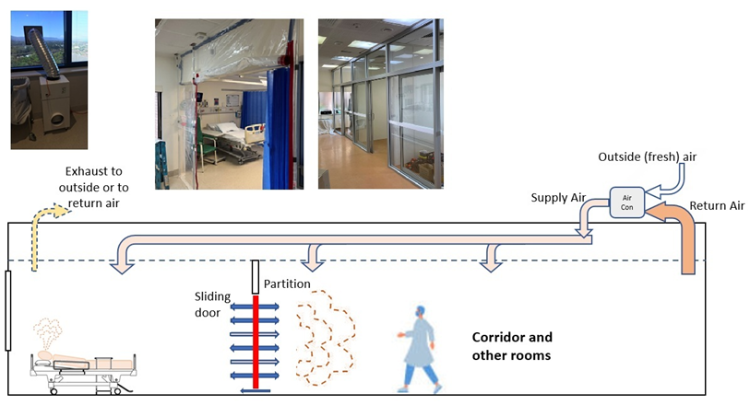
Overview
The purpose of the review was to synthesise the evidence relating to the impact of indoor air quality on the transmission of airborne viral diseases in indoor public environments, and strategies to reduce the transmission of airborne viral diseases in indoor public settings in Australia. This review project was commissioned by the Office of the Chief Scientist of Australia on behalf of the Prime Minister’s National Science and Technology Council. This report provides findings from a synthesis of evidence focused on the following areas:
- The mechanisms involved in the transmission of airborne diseases in indoor public buildings.
- Strategies to improve indoor air quality can reduce the transmission of airborne diseases in public buildings.
- Whether indoor air quality monitoring can be used to support reduction in airborne disease transmission.
- Impacts of these strategies to improve air quality for reduction in disease transmission on the energy efficiency of buildings.
Impact of the identified airborne diseases on the economy, and human health and wellbeing.
Themes
- Health and wellbeing
- Environment and climate action
Relevant SDGs
- SDG 3: Good health and well-being
- SDG 11: Sustainable cities and communities
Find out more
Overview
A standardised simulation methodology was used to evaluate the environmental performance of low rise unit complexes in the Homes NSW building portfolio (social housing). The study assessed the impact of low, medium and high cost energy efficiency upgrades across NCC Climate Zones in NSW, focusing on practical, cost-effective upgrades to improve thermal comfort, reduce carbon emissions and reduce tenant energy costs.
It was demonstrated that energy efficiency upgrades for low rise unit complexes, particularly solar PV systems, insulation, and appliance electrification, can significantly improve thermal comfort and reduce energy use, tenant energy costs, and carbon emissions. The study provided a pathway for achieving Net Zero targets in social housing, whilst also improving thermal comfort and climate change adaptation.
Themes
- Environment and climate action
- Industry and energy transformation
Relevant SDGs
- SDG 7: Affordable and clean energy
- SDG 11: Sustainable cities and communities
- SDG 13: Climate action